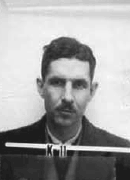James Sircom Allen (1911-1982) was a Canadian-American physicist who worked at the Massachusetts Institute of Technology and Los Alamos during the Manhattan Project.
Born in Halifax, Nova Scotia, Allen received his bachelor’s degree from the University of Cincinnati in 1933 and his Ph.D. in Physics from the University of Chicago in 1937. Allen continued his study of nuclear reactions as a research associate at the University of Minnesota from 1937 to 1939, where he studied secondary electrons—electrons produced as ionization products—and developed a secondary-electron multiplier for use as a detector for positive ions, electrons, and photons. Allen then moved to Kansas State College, where he was an associate professor of physics from 1939 until 1942. There he performed a well-known experiment in which he determined the momentum of a particular neutrino—a type of elementary particle.
During World War II, Allen worked first at the Massachusetts Institute of Technology Radiation Lab on the development of radar. In 1943 he moved to Los Alamos, where he worked with gaseous particle detectors and electron multipliers.
After the war, he returned to the University of Chicago as an assistant professor. His research focused on measurements of the energy distribution of nuclear recoils and its correlation with the direction of emitted electrons, which helped provide information on the type of weak interactions involved in beta decay. In 1948, Allen moved to the University of Illinois at Urbana-Champaign, where he continued his study of beta decay. Allen stayed at the University of Illinois for twenty-five years.
After his retirement, Allen moved to Taos, New Mexico, in 1973.





